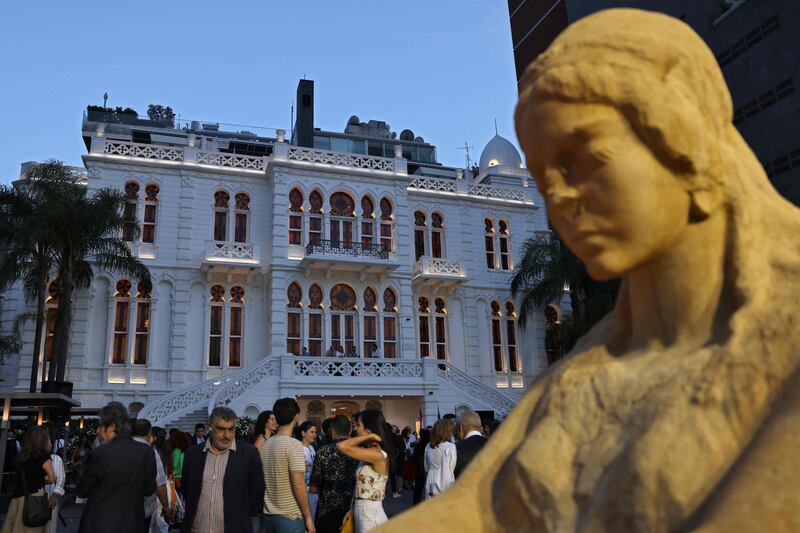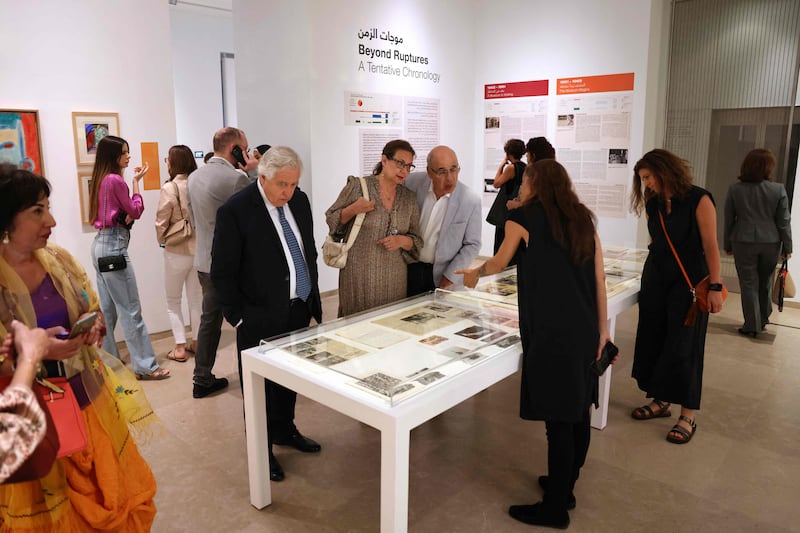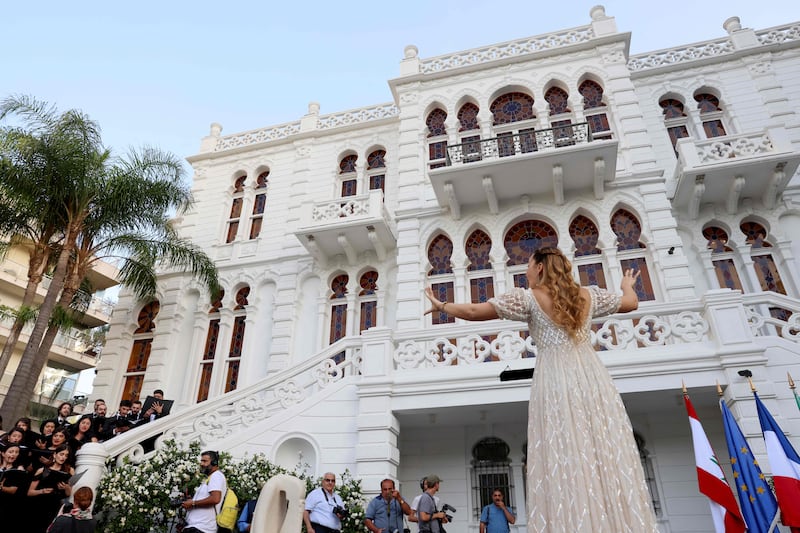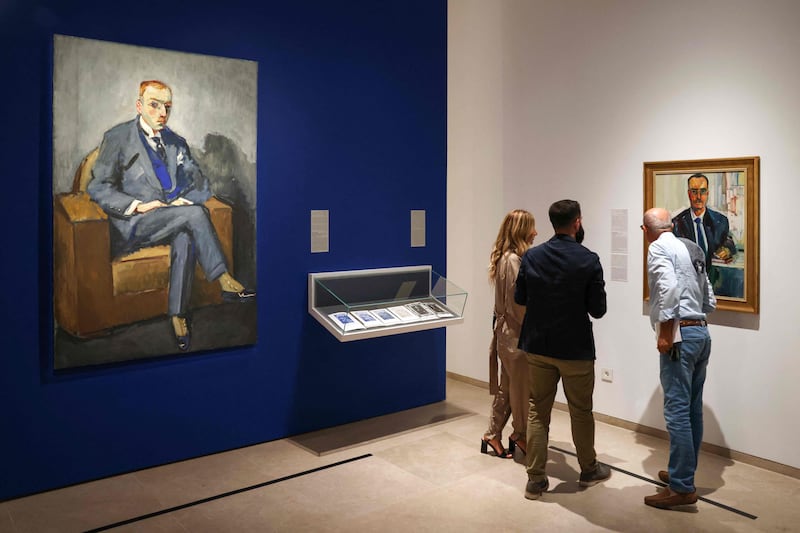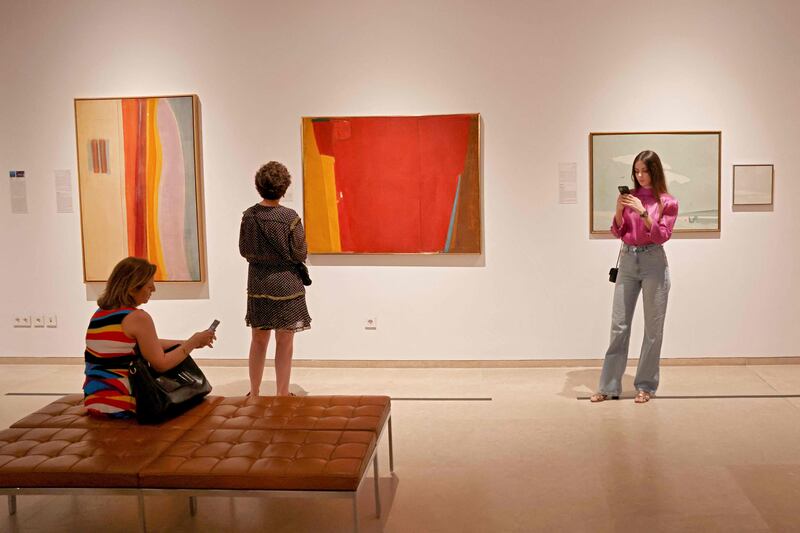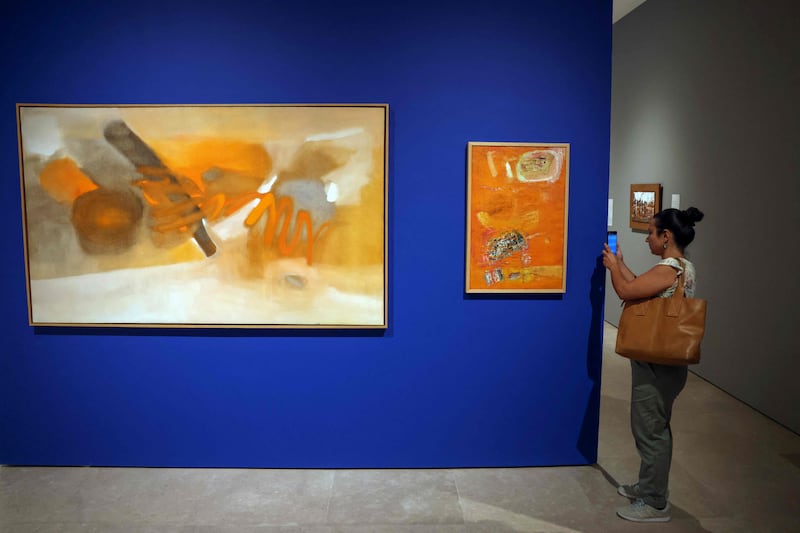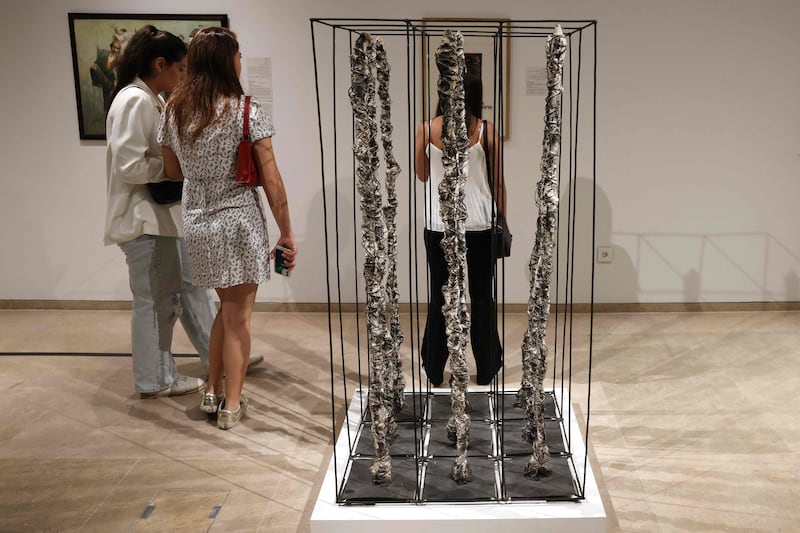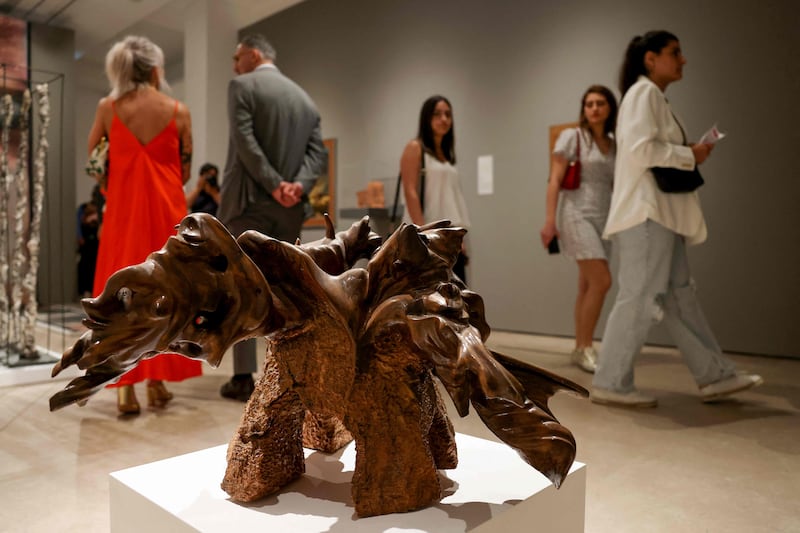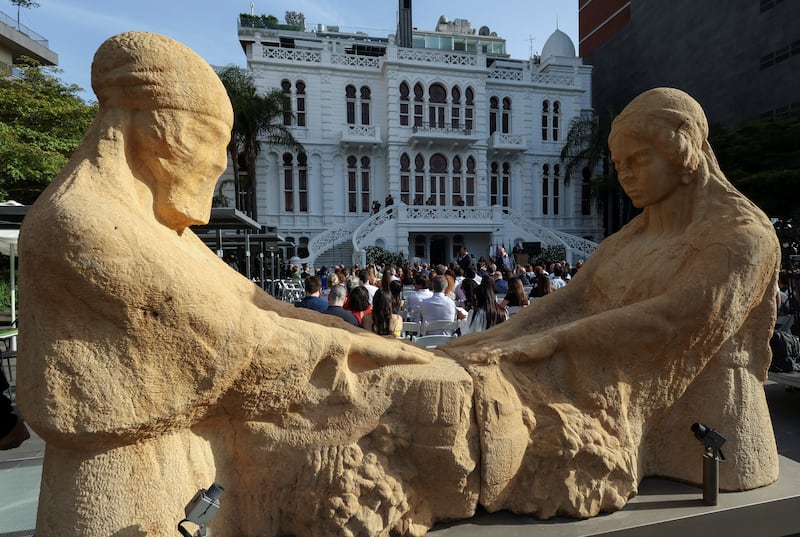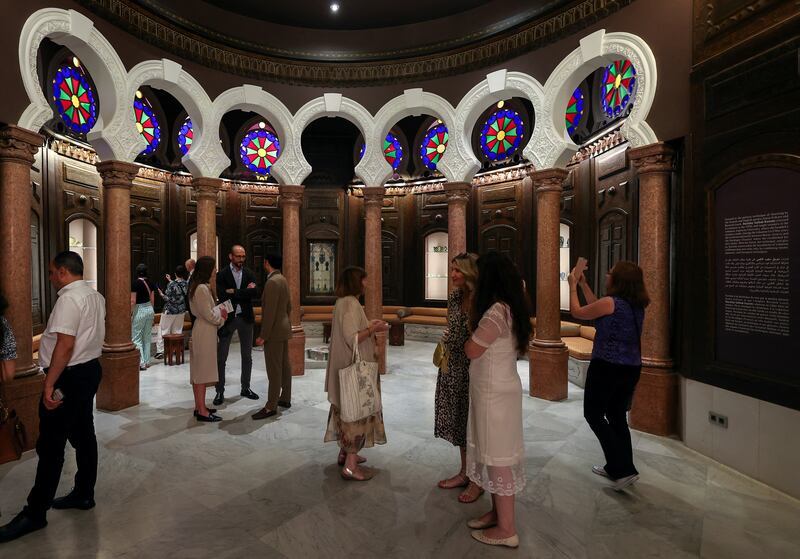The long-awaited reopening on Friday evening of the newly renovated Nicolas Ibrahim Sursock Museum in Lebanon's capital was hailed by visitors as a cultural and spiritual revival of the city.
It was the first time visitors had returned to the Sursock Museum since the catastrophic August 4, 2020, explosion ripped through Beirut's port, destroying or severely damaging large parts of the city and killing more than 200 people.
It was one of the largest non-nuclear explosions in history.
The museum was heavily damaged in the explosion, closing its doors for nearly three years.
On Friday, the museum, recovered from its wounds and replete even with its famed stained glass windows, officially reopened with a large celebration that welcomed hundreds of patrons.
“We're excited that people are gathering together again in Beirut,” artist and interior designer Rima Shaaer told The National. “It's like Beirut's cultural image is returning after these past few years.”
The opening felt like a return to relative normality, she added.
Sursock is Beirut’s largest art museum, hosting a collection of 1,500 works that include masterpieces by prominent Lebanese artists such as Shafic Abboud, Paul Guiragossian and Jean Khalife.
Beirut's historic Sursock Museum reopens to public after blast
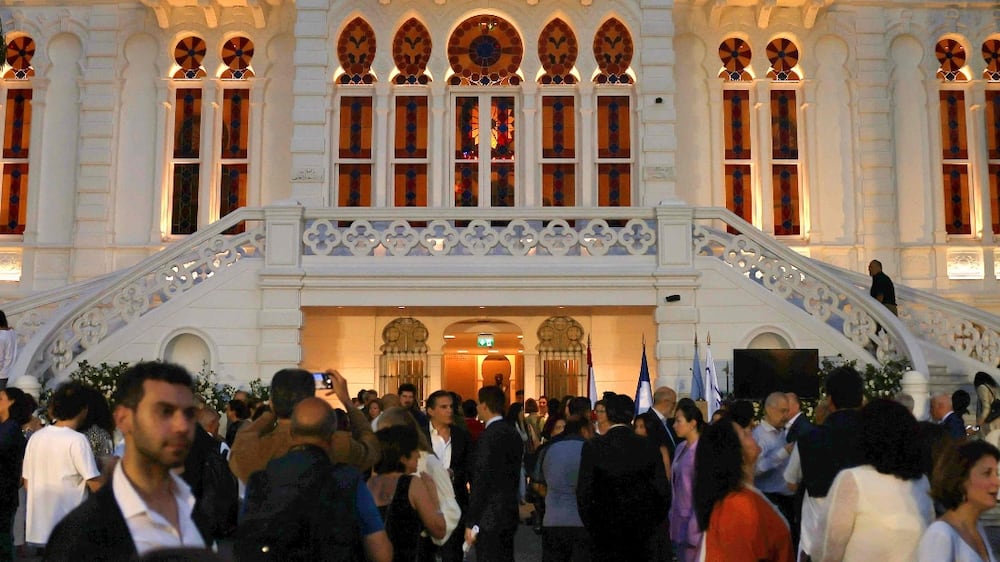
The museum is also the capital's largest and oldest independent cultural institution, widely viewed as a landmark of the city's cultural scene.
It was a place for permanent and temporary art exhibitions and a source for film screenings, talks and workshops.
Sursock is also famously a place where visitors were always inevitably bound to run into someone they knew, catching up over a coffee on the museum's terrace.
An outpouring of collective solidarity after the blast was what allowed the museum to raise more than $2 million to fund the restoration works, with the Italian and French governments, as well as the UN cultural agency Unesco contributing significant funds.
The reopening was attended by diplomats, politicians, artists and curators, and commenced with a series of speeches.
“Tonight shows what can be achieved when there is a collective action co-ordinated on the ground,” said museum director Karina El Helou in her welcome speech, referring to the donations that poured in from friendly countries, as well as local and international organisations.
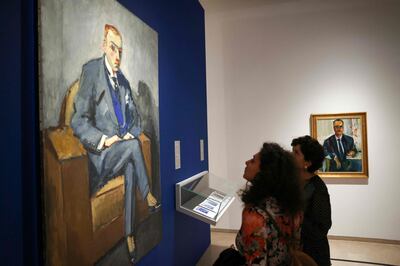
“In the last month, the building finally started coming together.
“The walls were painted, the electricity wiring completed and the lights were turned on. Then finally, the art was erected, bringing the museum back to life.”
Ms El Helou, a Lebanese citizen who had been residing in France, became the director the museum in October of last year.
She had been in Paris when the massive explosion took out chunks of Beirut, bringing much of the city's art and culture scene down with it.
“It's a joyful moment to see people walking around again,” she said, waving at the hundreds of people gathered on the museum's expansive terrace.
“This is what it's all about.”
But she added that the reconstruction of the Sursock building was only the first of many hurdles, with the museum still facing financial challenges.
“Today we want one battle. But we still have many battles to win in order to really create a sustainable institution in such an unstable country.”
Some visitors who attended the reopening had emotional ties to the majestic, Ottoman and Venetian-style villa-turned-museum.
Maissa Fatte, 33, grew up across the street from the museum, where her grandfather worked as a part-time curator for 40 years.
When she was younger, Ms Fatte would visit the museum every week to spend time with her grandfather, a doctor and art lover who had formed an attachment to the museum.
“That's how I found my passion for art,” she told The National.
When the museum was damaged in the explosion, she was devastated to lose a part of her grandfather, who passed away in 2017.
“It's heartbreaking thinking about what he would have thought seeing the museum the way it was after it was after the blast,” she said.
“It makes me so happy to see this museum renovated and open again. Seeing the stained glass windows shattered all over the place after the explosion … that was really heartbreaking.”
